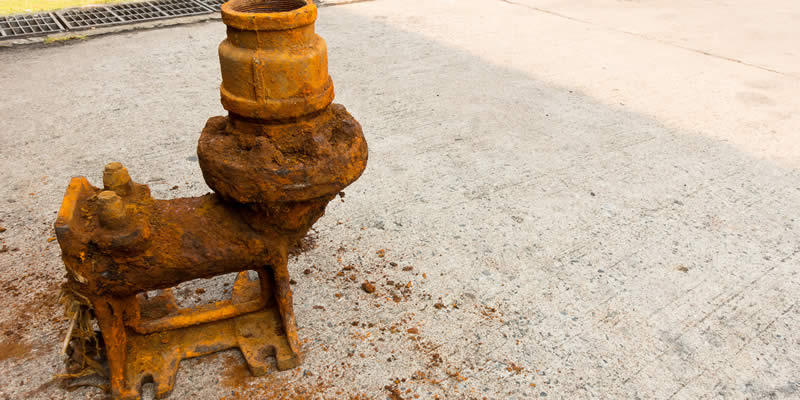Installed Cost for Septic Sewage Ejector Pump Replacement
The cost to replace a septic tank pump is $485 to $1,400 based on the horsepower, maximum flow rate, quality and features of the pump plus installation factors. These are professionally installed costs. Retail pump prices and the cost of installation labor are broken down below for those considering DIY septic pump replacement.
Average Cost Ranges
Overview of Septic Ejector Pumps and Replacement Costs
The explanation of a sewage pump is straightforward. If you have a basement bathroom with a drain that is lower than the septic tank, you need an ejector pump to lift wastewater to the tank.
Septic systems are more complex. Conventional septic systems make use of gravity. The effluence leaves the tank and runs through a pipe slightly downhill to the leach field.
However, when local soils aren’t suitable for one of the conventional, gravity-fed leach field types, a raised mound system is required. The drain field is installed on top of the existing soil after the topsoil is removed. It is built up so that it is higher than the septic tank, and therefore a pump is required to move effluent from the tank to the field.
Sewage Pumps installed in a home’s basement are necessary to lift raw sewage to the pipe leading to the septic tank. Because they contend with solids, they are heavier duty and cost a little more.
Effluence Pumps are part of the outdoor system. If you have a conventional leach field, meaning the effluent flows by gravity to it, you don’t need a pump. Effluent pumps are only used in engineered mound systems where the leach field (aka drain field) is raised above the height of the septic tank, and the liquid from the tank must be pumped up to the field. In most designs, the effluence from the septic tank flows into and tank with the submerged pump, also called a dosing chamber, and is pumped up and out to the field.
Effluence pump replacement options: Typically, just the effluent pump needs replacement. If the entire system is older and showing signs of failure, some homeowners replace the entire pump kit with pump, high-water sensor, switch, and alarm panel at a cost of $2,700 to $3,500.
Replacing either type of pump is usually required after 7-12 years, depending on initial quality and how heavily the system is used.
During replacement of either type, power is shut off to the pump, and the pump is pulled from its reservoir. Wiring is disconnected. At this point, it will be inspected to determine the cause of the failure and whether repair rather than replacement is possible. However, when the pump is older, and with the cost of parts plus the hourly rate for labor to repair it, replacement is often the wisest choice.
Then the process is reversed – the new pump (or repaired pump) is wired, set in the tank, and if an exit pipe to the tank or field has been disconnected, it is reconnected. Power is turned on, and the system is tested to ensure it is in good working condition.
Homeowners who want to save money, have good DIY skills and don’t mind a dirty job can probably tackle it. Depending on the cost of the pump, do-it-yourself savings are in the range of 15% to 50% of the total job cost. If you hire a contractor to replace an effluence pump, they might want to pump the main septic tank and the pump chamber to inspect the system to determine if any reason can be found for the failure of the pump other than it wore out.
Sewage and Effluence Septic Pump Cost Factors
Septic tank pump replacement cost is affected by the following:
- Pump Quality – This, more than size, is the #1 cost factor. A high-quality cast iron pump from Goulds, for example, costs twice what a midrange option from Zoeller or a cheaper pump.
- Cast Iron vs Thermoplastic Housing – Within any brand, cast iron pumps cost significantly more than those with thermoplastic bodies. The only advantage to thermoplastic is that it resists corrosion, so you might want to consider a pump with a thermoplastic housing if you have a water softener that uses salt.
- Pump Size – Septic pump sizes range from 1/3 to 1 1/2 horsepower with 1/2 and 3/4hp being most common. Your new pump should fit the system design provided by the engineer including flow rate in gallons per hour (GPH). It’s not a good idea to save a few bucks with an undersized pump.
- Cord Length – Lengths available are 10’ to 50’, though most are 20’ or 25’. Effect on cost is minor.
- Voltage – Pumps are either 120V or 230V. The cost of 230V pumps is slightly higher. However, if the breaker needs to be replaced too, cost for a 230V system is quite a bit more.
- Where you Live – As with all home improvement projects and repairs, local cost of living impacts price. Costs are higher on the Coasts, especially the Northeast and Northwest. Metro areas in the “middle” of the country are average, while small towns and rural areas have the most affordable cost of living.
Cost of the Septic Pump
Let’s price some pumps to show you what to expect. We’ll use Goulds (top-quality), Zoeller (midrange) and Liberty Pump (cheapest) to demonstrate effluent pump prices at 1/3, 1/2 and 3/4hp sizes. Pump cost is $330 to $1,500 for the most commonly used types. Upgraded Home suggests $300 to $800, which covers lower horsepower options.
1/3 Horsepower
- Goulds 1/3hp Pump | $330 – $900
- Zoeller 1/3hp Pump | $325 – $415
- Liberty Pumps 1/3hp Pump | N/A
1/2 Horsepower
- Goulds 1/2hp Pump | $390 – $1,175
- Zoeller 1/2hp Pump | $375 – $1,075
- Liberty Pumps 1/2hp Pump | $290 – $875
3/4 Horsepower
- Goulds 3/4hp Pump | $1,385 – $1,500
- Zoeller 3/4hp Pump | $600 – $950
- Liberty Pumps 3/4hp Pump | $435 – $1,050
The full kits were also mentioned above, but they are most commonly used in new raised mound systems and when an old system needs a complete overhaul.
Pump, Switch and Alarm System | $1,875 – $2,650
Are grinder pumps the same as sewage pumps? Grinder pumps are a commercial grade sewage pump usually installed in business settings like restaurants rather than in homes. According to Angi, they’re a more expensive option at $2,000 to $4,000.
Permits, Inspection, and Labor Costs
Permits and Inspection
- $0 – $150 | Simple pump replacement does not require a permit. If wiring and a breaker is being added or replaced, then an electrical permit is needed.
Time to Install a Septic Tank and Leach Field
- 2-3 Hours | Pulling the old pump and replacing it is a fairly quick job for an experienced technician.
Installation Labor Cost
The cost to replace an effluent septic pump is $625 – $1,700 for most jobs, a price a bit higher than HomeGuide’s estimate of $500 to $1,500. Pump cost range is $350 to $900 for the most popularly installed pumps. That leaves labor.
- $275 – $500 | Labor cost to install a septic pump
Related Projects
Here are several other common projects related to septic, sewage and plumbing systems at your home.
Are You a Septic Repair Professional?
If so, head over to our Costimates Pro’s page, and help us make this page better and more accurate for both our visitors and your future customers.
DIY or Hire a Pro
Have you successfully replaced a sump pump or similar? That would be one indicator this is a DIY opportunity for you.
Like many home improvement projects, it can be done by anyone with good skills and some experience. By our calculation, you’ll “pay yourself” up to $500 in cost savings.
Consider replacing your own effluent pump if:
- You understand safety steps when working with electrical equipment
- You are comfortable reading instructions and comprehending wiring diagrams
- You pay close attention to detail without rushing the job
- You don’t mind getting dirty
And it never hurts to watch it being done at least once before you tackle the job.


 Steve Hansen, that's me, the Senior Editor of Costimates. (
Steve Hansen, that's me, the Senior Editor of Costimates. (